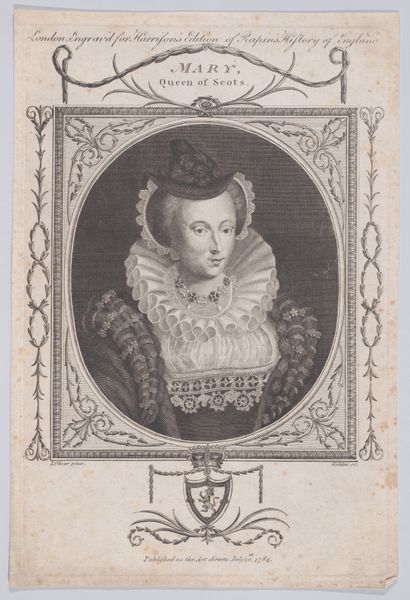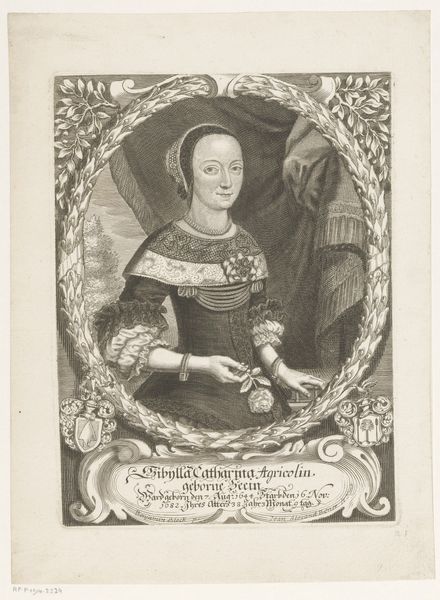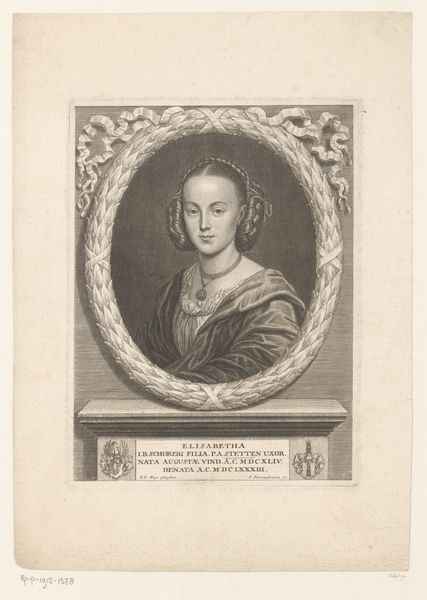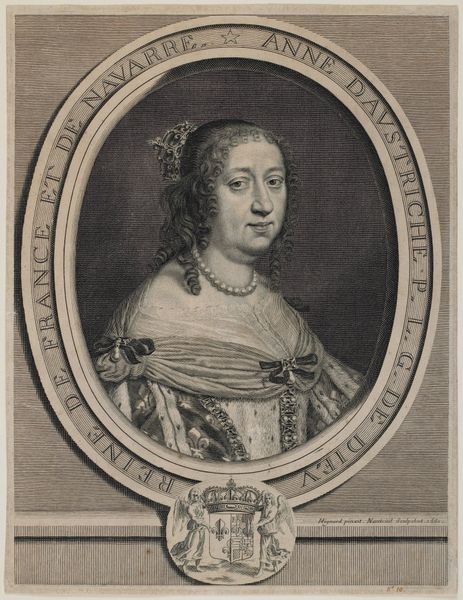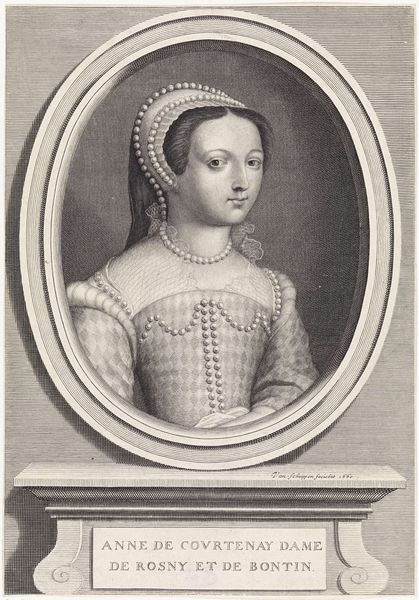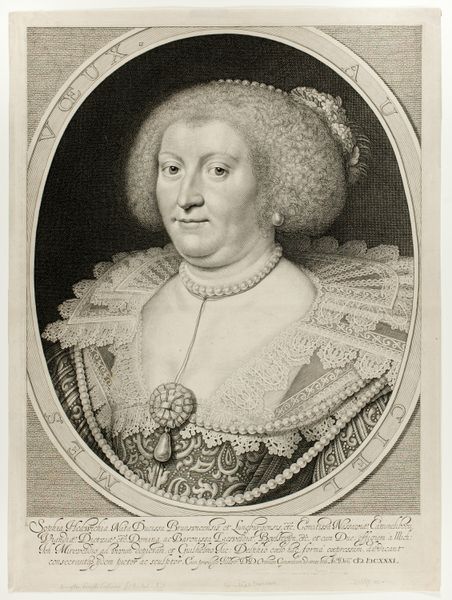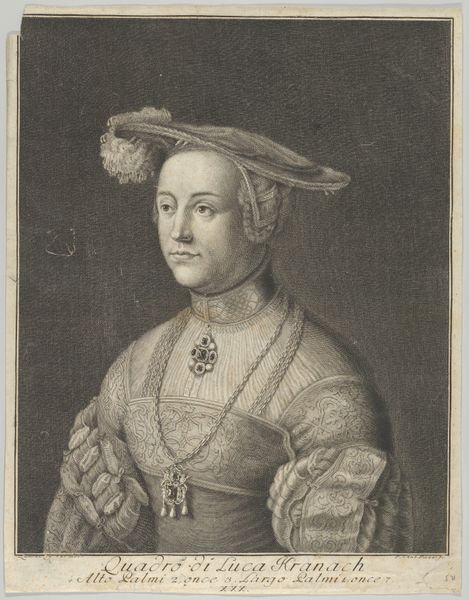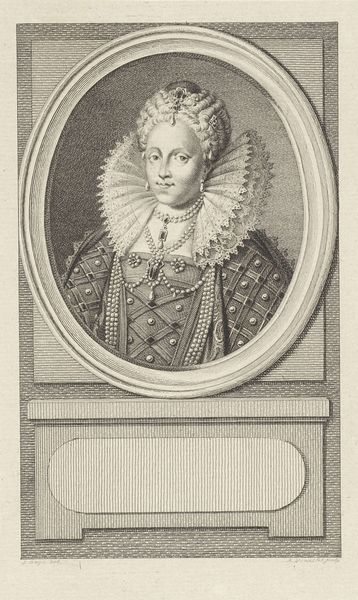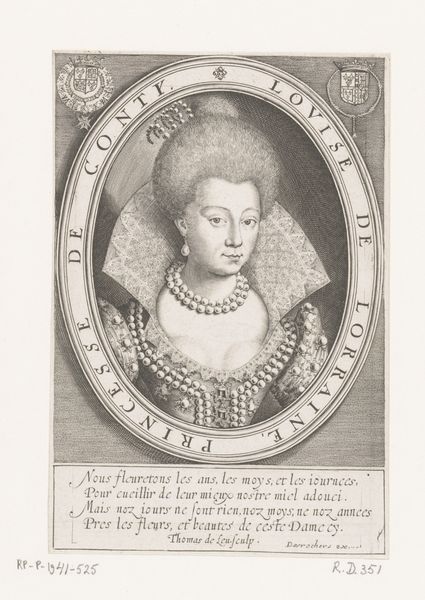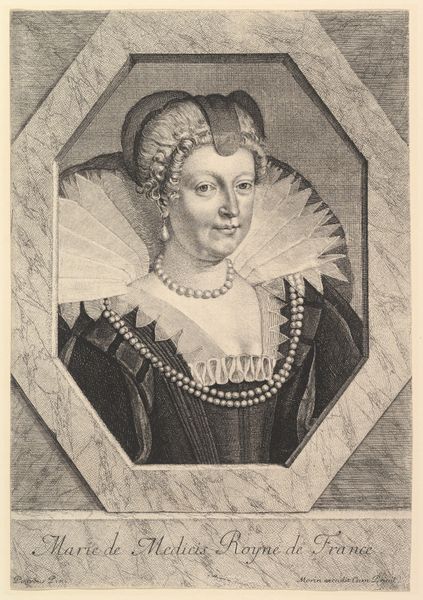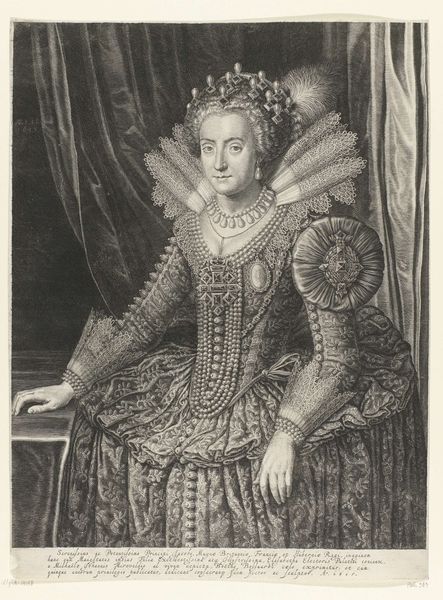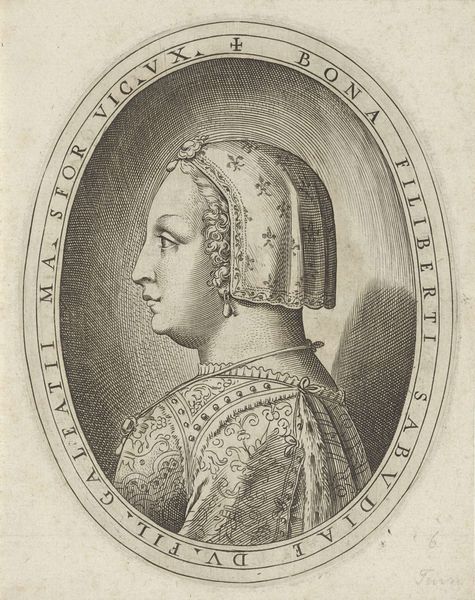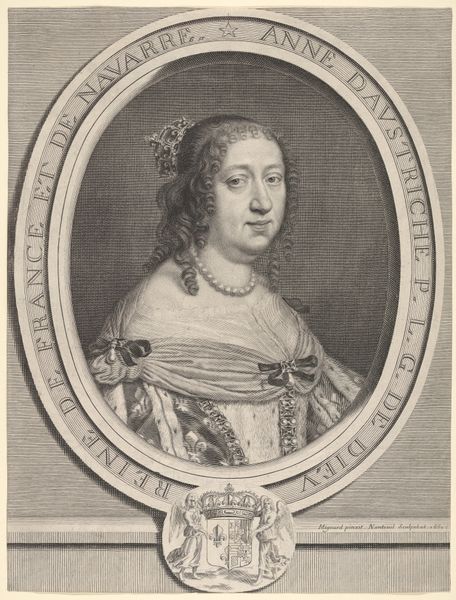
engraving
#
portrait
#
medieval
#
baroque
#
old engraving style
#
traditional media
#
form
#
historical photography
#
line
#
history-painting
#
engraving
#
realism
Dimensions: height 298 mm, width 197 mm
Copyright: Rijks Museum: Open Domain
Curator: Here at the Rijksmuseum, we have an engraving titled "Portret van Margaretha Christina Wendler" dating back to between 1690 and 1693 by Elias Hainzelmann. Editor: The first thing I notice is the somewhat severe elegance. She's framed by this delicate laurel wreath, which feels almost paradoxical given her intense gaze. What does that frame symbolize in this context? Curator: It's fascinating, isn't it? Laurels, traditionally signs of victory and honor, could be a marker of social status for Margaretha, her family. As an engraving, think about the reproductive capabilities—this image could have been distributed widely, reinforcing the social structures. Consider the labor: the engraver’s skill in rendering minute details using relatively basic tools would have added to the subject's allure. Editor: Precisely. I see the layers. The pearl necklaces suggest purity and wealth. That elaborate brooch, perhaps with family heraldry at its center, it’s visually anchoring the entire composition. Those elements together tell a powerful story of heritage and power. Curator: Let's not forget the inscription below. Note how her age at death, 36, is prominently displayed. Engravings like this weren't merely decorative; they served as biographical records. Did this proliferation alter the perception of the family and individual’s legacy over time? Editor: Absolutely, they curated public memory, preserving the Wendler name and lineage through widely distributed images. These images are powerful objects of memory and status, speaking volumes about cultural ideals of beauty and position during the Baroque era. The contrast between the ephemerality of life, and the endurance granted by this medium… quite potent, isn't it? Curator: It gives a sense of the social currents of that time. From my perspective, these details highlight the tangible resources and complex craft that underpins such a seemingly simple image, pointing us to the broader conditions of its creation and dissemination. Editor: Indeed, analyzing the symbols helps reveal a window into their worldview, a cultural tapestry woven with aspirations, status, and remembrance. I found how they wanted to be remembered profoundly illuminating.
Comments
No comments
Be the first to comment and join the conversation on the ultimate creative platform.
